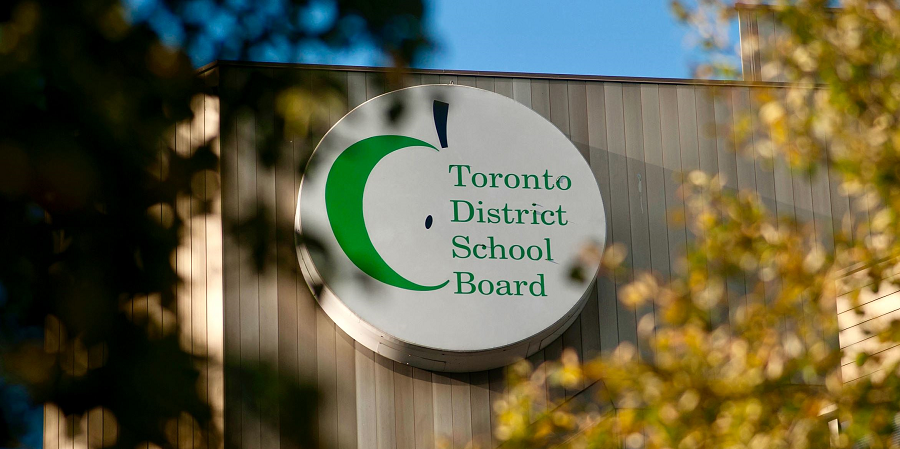SYED JAWED ANWAR
First Published: Muslims Weekly, New York, June 27, 2004, Issue No.#225
DISEASE is of such concern among human beings that, from the beginning, Allah gave some prophets healing ability in the form of miracles so that the prophets would be recognized as legitimate, thereby validating their warnings of the hereafter. Prophet Jesus (pbuh) was given the capability to cure the blind and the leper (Al-Quran 5:110). Prophet Muhammad (saw) was given the knowledge of how to protect the body and to live a healthy life; and his wife Hazrath Aisha r.a, became a medical expert who passed on her knowledge to others. A field of science known as “the Medicine of Prophet Muhammad” was developed by various scholars and doctors with the help of Ahadith [the collection of words and deeds of Prophet Muhammmad (saw)]. A Qur’anic Revelation tells us that honey can be used as medicine: “And thy Lord taught the Bee to build its cells in hills, on trees, and in (men's) habitations; Then to eat of all the produce (of the earth), and find with skill the spacious paths of its Lord: there issues from within their bodies a drink of varying colours, wherein is healing for men: verily in this is a Sign for those who give thought.” (Surah 16: 68-69). The Sahaba (companions of Prophet Muhammad) and Muslims of all periods have always been curious to know how Prophet Muhammad used honey and other things to cure diseases. Knowledge of medicine was acquired by Muslims throughout history and was part of the syllabuses of different curriculums adopted by Muslim educators.
According to the teachings of Islam, health is a trust from Allah given to a person, and any carelessness or act to damage good health will be considered mistrust. A person’s body truly belongs to Allah, so a person does not even have the right to damage his or her body with such things as tobacco products, alcoholic drinks, unhealthy diets, and unsafe lifestyles. Deeds that help to protect health and to cure diseases, however, are good deeds and will be highly rewarded by Allah. Prophet Muhammad (saw) said that Allah has not allowed any disease for which there is no cure. Taharah (nearest meaning in English: cleanliness) is a part of the Muslim faith, and Taharah is the foundation of good health. Such concepts as these have inspired Muslims in research and development in order to produce medicines, tools, and techniques to cure and prevent diseases and to make human life healthier and more enjoyable. As humanity was made to be Allah’s representative over creation, the sciences that improve the health and preservation of plants and animals are also within Allah’s mission for humanity. A proverb famous among people of knowledge states that there are only two types of knowledge: Ilmul Abdan (knowledge of physical bodies) and Ilmul Adian (knowledge of faith, practice and ways of life)
Contributions of Muslim scientists have been recorded in manuscripts. An American Muslim Amir N. Muhammed has written a book Contributions of Muslims to the World in which he collected the following facts:
In Damascus (now Syria’s capital) in 809 AD, Harun ar Rashid, a Muslim Khalifa (ruler), founded the world’s first hospital, and he funded it from the state treasury. In the ninth century, Ali ibn Rabban al-Tabri wrote Firdaws al hikmah (The Paradise of Wisdom) in which he synthesized the Hippocratic and the Galenic traditions of medicine with that of India and Persia (Iran). He was a great teacher of medicine, and one of his students, Muhammad ibn Zakariyya’ al-Razi, was one of the great physicians who emphasized clinical medicine and observation. Al-Razi was the first who identified and treated smallpox. He was the first person to use alcohol as an antiseptic and to make medical use of mercury as a purgative.
Muqtadir Sinan ibn Thabit extended hospital services (908-932 AD) to meet the needs of neighboring rural areas and prisons. The fame of the tenth century Adudi hospital in Baghdad spread far and wide. The hospital hosted twenty-four doctors equipped with lecture halls and a library. Certain type of music was also played in some hospitals to soothe the patients and to speed up recovery. Anesthetics were made from hemp to help ease pain.
Muslims invented the ambulant clinic carried on camel back to provide services to people outside the towns and villages. Muslims invented pharmacies, produced the first pharmacopeias, founded the earliest school of pharmacy, and were the founders of institutions for the blind, dispensaries and institutions for special diseases.
In the late tenth century, Ibn al-Haitham, the greatest scientist to devote himself to optics, wrote a book, The Book of Optics, which gives detailed anatomy and the treatment of the eye. He rejected the previous notion that rays issue from the eye; instead he stated the eye receives the light from the object perceived. In the eleventh century, Ibn Abu Ali Husayn ibn Abdullah Ibn Sina was born in Bukhara, Central Asia. Ibn Sina was “the Prince of Physicians” and wrote the most famous of all medical books, Al-Qanun Fi-al Tibb (The Canon of Medicine). Ibn Sina discovered many drugs and identified and treated several ailments including meningitis. Ibn Sina created a system of medicine in which he combined physical and psychological factors along with drugs and diet. Ibn al-Nafis (1213AD-1288AD) born in Damascus, worked in Cairo at the Nasri and Mansuri hospitals discovered the circulation of the blood, hundreds of years before Harvey.
In the sixteenth century, a manuscript written by Syrian-born Ali Ibn Isa consisted of 280 pages of the famous treatise on ophthalmology. It was divided into three parts: the anatomy of the eye, visible diseases of the eyes, and hidden diseases. He documented both the causes and remedies and was the first person to propose the use of anesthesia for surgery. His work was translated into Latin as the Tractus-de Ocalis of Jesu Ben Hali.
Hunain ibn Ishaq (809-873 AD) ((known in the West as Joanitius), born in Iraq, was a brilliant linguist, scientist, and physician who wrote at least twenty-nine original treatises on medical topics. The most significant is a collection of ten essays on ophthalmology. The essays cover the anatomy and physiology of the eye and treatment of the various diseases afflicting vision.
Ibn Baitar, one of the most famous botanists from Andalusia (Muslim Spain), after traveling all over the east to find medical herbs, wrote a famous book called Collection of Simple Drugs and Food. He wrote about herbs, preparation of drugs, and drug administration, purpose, and dosage. Abu Marwan’ Abd al-Malik ibn Zuhr (d.1162 AD) (known in the West as Avenzoar), native of Seville, Muslim Spain, made numerous important medical and surgical discoveries.
Abu al-Qasim al Zahrawi was the first to use silk thread for stitching wounds.
-Contributions of Muslims to the World by Amir N. Muhammed
South Asian experience:
In the famous “Nizami Syllabus” there were five or six medical books for the last years of the theoretical education. The student who were looking to practice medicine was required to do internship with an expert doctor (known as Tabeeb e Haziq) and had to apply practical knowledge for several years before starting his or her own clinic. Hakim Ajmal Khan (d.1348H/1929A) was the father of medical science in Muslim India and is credited with innovations in different fields of medicine. Most of his writings are in Arabic; therefore most people are still unaware of him. In the First World War, there was a world epidemic of influenza. While Western-educated doctors were struggling for a remedy, Hakim Ajmal took initiative and made a medicine jushada (a liquid form; extract of various herbs) and placed it all over Delhi in water tanks. People on the street each took a bowl of free jushada and the whole city was saved from influenza. Ajmal’s forefathers taught medicine and gave certificates to students completing two or three years of study. Ajmal’s elder brother Hakim Abdul Majeed Khan established the first medical college, in 1879, in which there were three years theoretical and two years clinical education. In 1919, Hakim Ajmal Khan established a MedicalCollege (Tibbiya College) in which there was a four-year syllabus of medical education including modern medical and surgical techniques.
Sir Syed Ahmed Khan, in his book Aasaar us Sanadeed (on the buildings and architecture of the city of Delhi in the nineteen century), mentioned a medical college “Darul Shifa.” Manik Chand, in his book Ahwale Shahar Akbarabad (about the city of Akbarabad), mentioned another “Dar ul Shifa” in Agra; it was a hospital plus medical educational Institute (according to Mughal Hindustan: Cities and Industries by Hameeda Naqvi, a woman author).
The medical profession was one of the most respected professions, and Muslim physicians were generally very close to Allah and loved Him and all of humanity as they prayed for their patients. This was a profession of service and dedication --not a money-centered, exploitative business— and maintaining patient confidentiality was their top priority.
Smallpox shots and surgery for eye cataracts were prevalent in Muslim India where doctors applied their own technology. The details of smallpox shots are described in the diary of Hakim Menhdi Ali Khan, translated and published in English in the journal Asiatic Affair, London, in 1804.
Several Muslim rulers and scholars of India were interested to learn the development in the field of medicine in the West. The brightest and bravest ruler of Muslim India, Abul Fatah Tipu Sultan (1750-1799), established the first institution in India to translate Western books into Arabic and Farsi, the languages of the entire Muslim world of that time including India. One of the translators was Mirza Muhammad Nasir Afshar Turk. He translated six important books of the time on medicine, surgery, and pharmacy, from English and French. Mir Muhammad Hussain Londoni (1777) (named Londoni because he used to travel to London) wrote a book Magazine of the Knowledge of Physiques, a translation of a book, in English, on medical science.
The father of Hakim Athar Ali Khan came to Delhi as a doctor of the Iranian military commanded by Nadir Shah Afshar. Athar Ali was born and educated in Delhi, migrated to Calcutta, and, following in the footsteps of his father, studied medicine. In 1783, he wrote, in English, a dissertation, “Cure of Elephantiasis,” that was published in the 1792 historical academic journal of London, Dissertations on Miscellaneous Pieces Relating to the History and Antiquities, Science, Literature of Asia. The noted scholar of Pakistan Dr. Khawja Abdur Rashid found that publication and reproduced it in the July-September 1962 issue of Pakistan Journal of Medical Research (“Maghrabi Zubanon ke Maahir Ulema” by Professor Syed Muhammad Saleem).
Muslims from South Asian background, who are deluded by a historical myth that English language education was started and conducted by Sir Syed’s Ahmed Khan and his Aligarh M.A.O.College, will be amazed to know that a Muslim scholar’s dissertation in English was published more than one hundred years ago in one of the most prestigious journals of the West. Also Sheikh Hafeezuddin (in 1821), Dr. Fazluddin Ali Dehlavi (in 1844), Hakim Nasseruddin (in 1848), Hakim Munshi Hussaini (in 1853), and Syed Zainul Aabedin (in 1852) wrote books on surgery, medicine, and pharmacy. These scholars had proficiency in English and well educated and informed of the Western knowledge.
(This is a series of columns for the understanding of the history of centuries old Madrasa and Islamic Education System in South Asian perspective published in the Muslims Weekly, New York, USA, in series of the weekly column “Personal Notes.” Syed Jawed Anwar can be reached at jawed@seerahwest.com)







